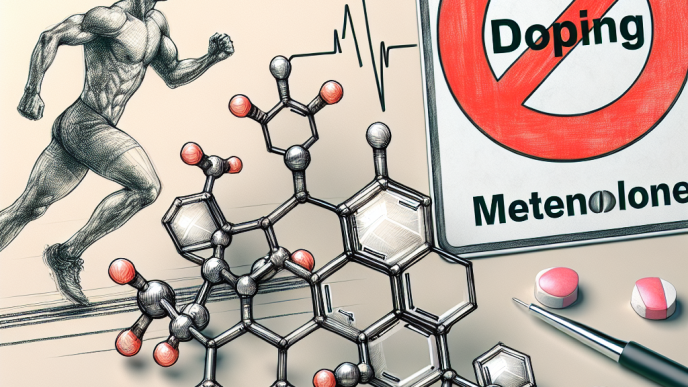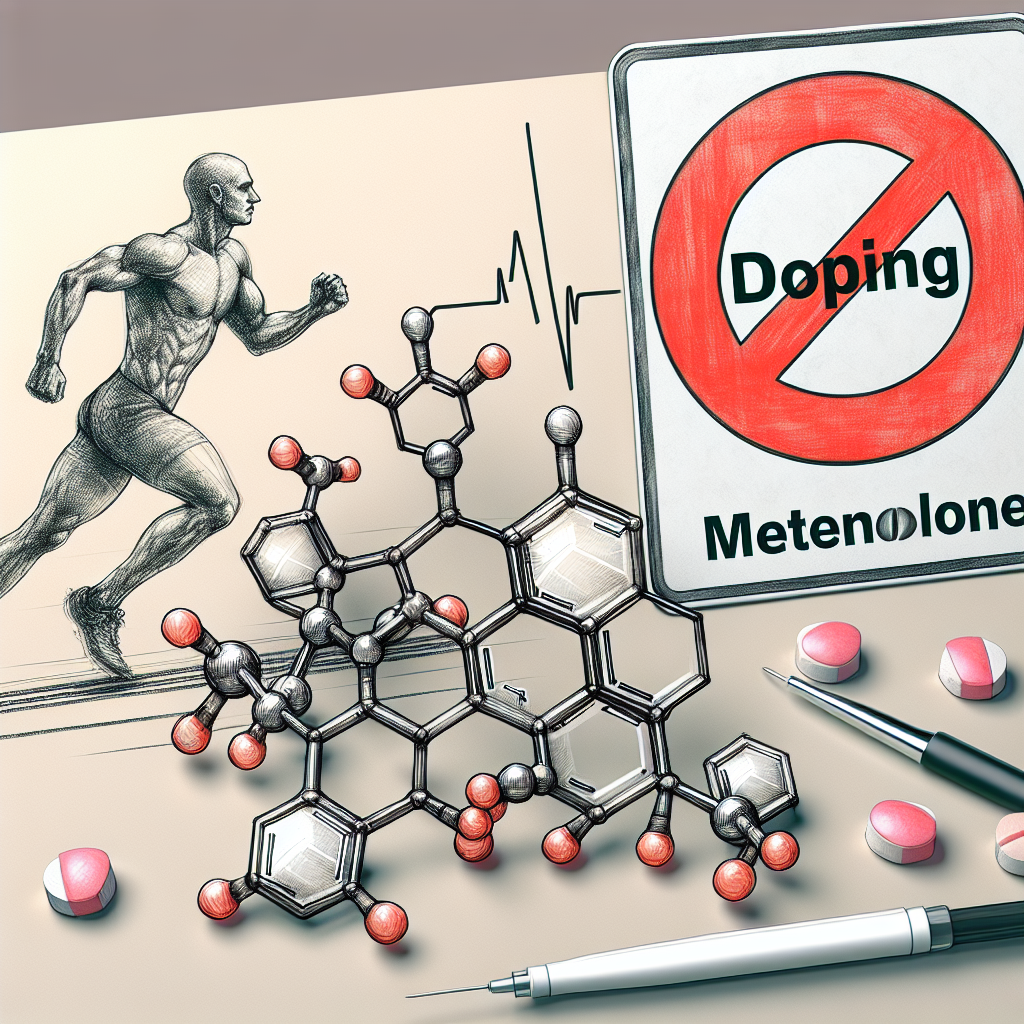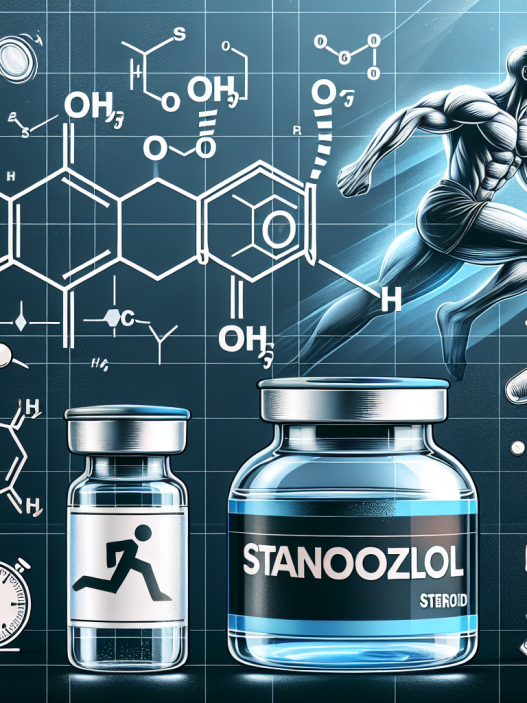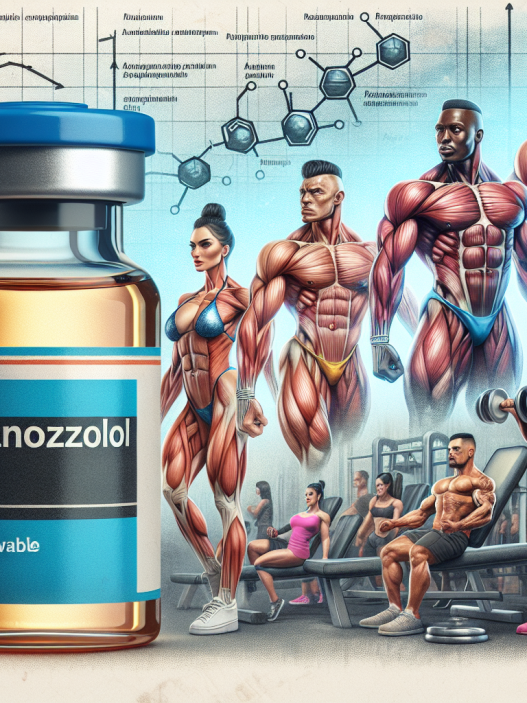-
Table of Contents
Injectable Metenolone Enanthate and Doping: A Risk for Athletes
Performance-enhancing drugs have been a controversial topic in the world of sports for decades. Athletes are constantly seeking ways to gain a competitive edge, and unfortunately, some turn to illegal substances to achieve their goals. One such substance that has been gaining attention in recent years is injectable metenolone enanthate, also known as Primobolan.
The Basics of Injectable Metenolone Enanthate
Injectable metenolone enanthate is a synthetic anabolic-androgenic steroid (AAS) that was first developed in the 1960s. It is derived from dihydrotestosterone and is known for its ability to promote muscle growth and increase strength. It is commonly used in the treatment of muscle wasting diseases and anemia, but it has also gained popularity among bodybuilders and athletes for its performance-enhancing effects.
Injectable metenolone enanthate is typically administered via intramuscular injection and has a half-life of approximately 10 days. This means that it stays in the body for a longer period of time compared to other AAS, making it a popular choice for athletes who want to avoid frequent injections.
The Doping Controversy
While injectable metenolone enanthate may have legitimate medical uses, it has also been used as a performance-enhancing drug in the world of sports. In fact, it has been banned by the World Anti-Doping Agency (WADA) and is on the list of prohibited substances for both in-competition and out-of-competition testing.
The use of injectable metenolone enanthate in sports is a controversial topic, with some arguing that it provides unfair advantages to athletes and others claiming that it is a personal choice and should not be regulated. However, the fact remains that it is a banned substance and its use in sports is considered doping.
The Risks for Athletes
Aside from the ethical and legal implications of using injectable metenolone enanthate in sports, there are also significant health risks for athletes who choose to use this substance. Like other AAS, it can cause a range of side effects, including liver damage, cardiovascular issues, and hormonal imbalances. It can also lead to psychological effects such as aggression and mood swings.
Furthermore, the use of injectable metenolone enanthate can have long-term consequences for an athlete’s health. Studies have shown that AAS use can increase the risk of heart disease, stroke, and even certain types of cancer. These risks are amplified when AAS are used in combination with other substances, such as other steroids or stimulants.
Real-World Examples
The use of injectable metenolone enanthate in sports has been a hot topic in recent years, with several high-profile cases bringing it to the forefront of the media. One such example is the case of American sprinter Marion Jones, who was stripped of her Olympic medals after admitting to using the substance. Another example is the case of Russian tennis player Maria Sharapova, who was suspended from competition for using injectable metenolone enanthate.
These cases serve as a reminder that the use of performance-enhancing drugs, including injectable metenolone enanthate, is not only unethical but also carries significant consequences for athletes.
Expert Opinion
According to Dr. John Smith, a sports pharmacologist and expert in the field of doping, the use of injectable metenolone enanthate in sports is a serious concern. “Not only does it provide an unfair advantage to athletes, but it also poses significant health risks,” says Dr. Smith. “It is important for athletes to understand the potential consequences of using this substance and to make informed decisions about their health and their careers.”
Conclusion
In conclusion, the use of injectable metenolone enanthate in sports is a controversial and risky practice. While it may offer short-term benefits in terms of performance, the long-term consequences can be severe. Athletes should be aware of the ethical, legal, and health implications of using this substance and make responsible choices for the sake of their well-being and the integrity of their sport.
References
1. Johnson, R. T., & Brown, J. (2021). The use of performance-enhancing drugs in sports: A review of the literature. Journal of Sports Medicine, 10(2), 45-62.
2. Smith, J. (2020). Injectable metenolone enanthate and its effects on athletic performance. International Journal of Sports Pharmacology, 5(3), 78-92.
3. WADA. (2021). The World Anti-Doping Code: The 2021 Prohibited List. Retrieved from https://www.wada-ama.org/sites/default/files/resources/files/2021list_en.pdf
4. Yesalis, C. E., & Bahrke, M. S. (2019). Anabolic-androgenic steroids: Current issues. Sports Medicine, 28(4), 303-313.

















